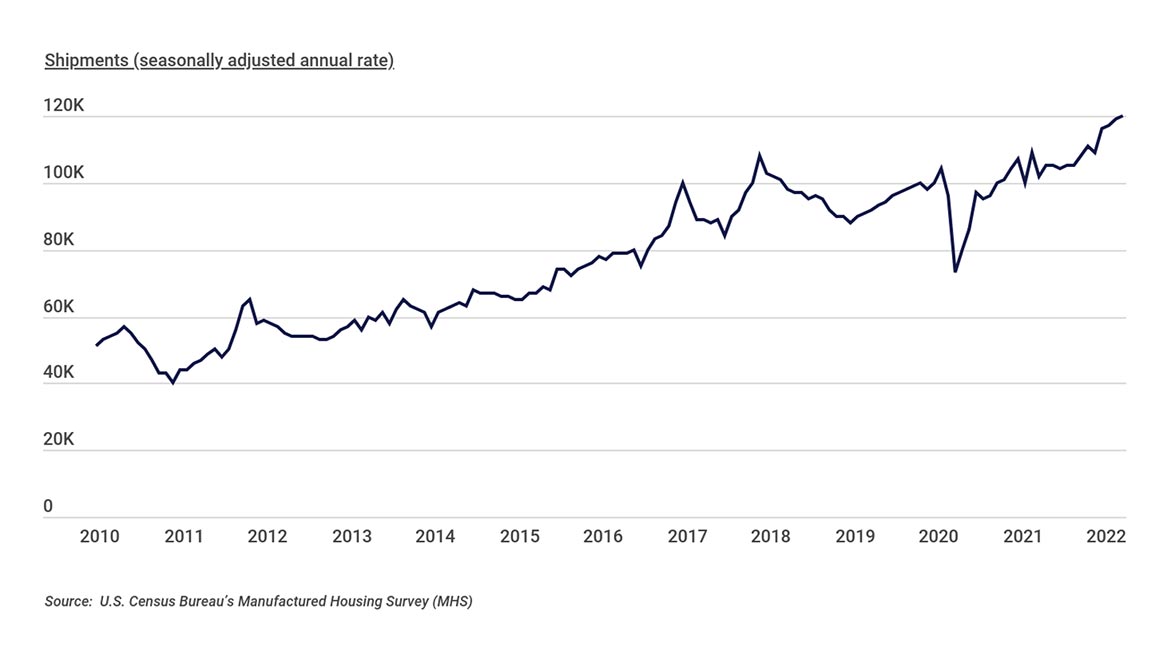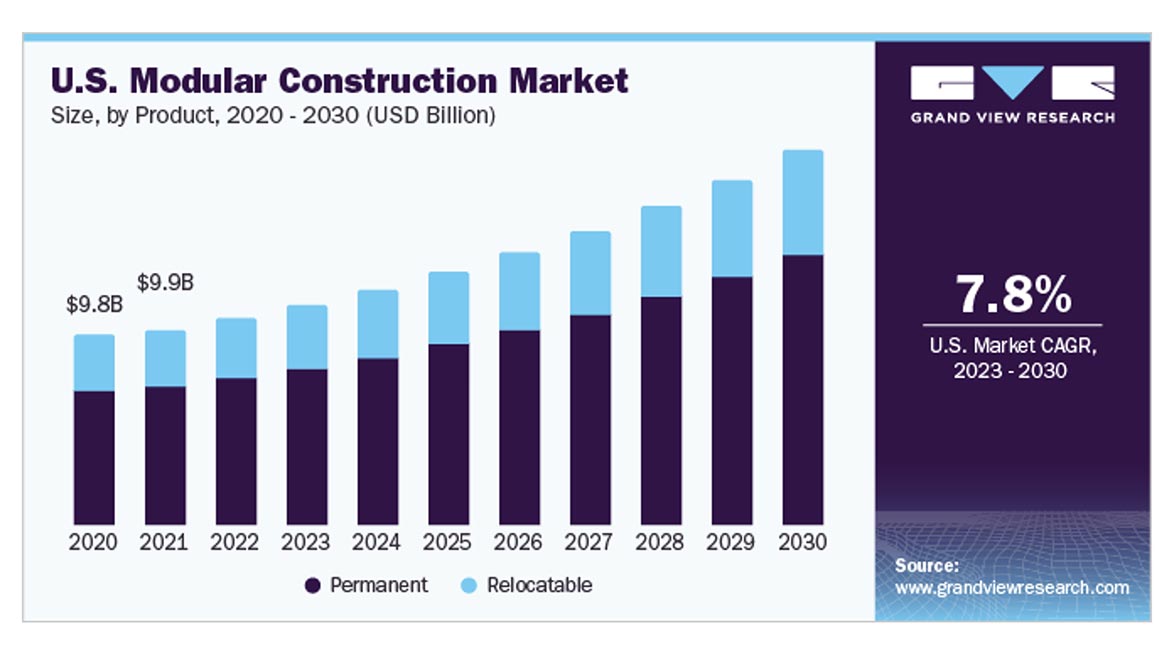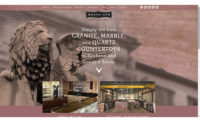Let me ask, if you finally found a leopard that COULD change its spots and potentially be the next coolest animal on the planet, would you not take active interest, want to find out more and perhaps monetize? Well, it has arrived; allow me to explain. The construction industry has remained substantially unchanged over the past century+. Where other industries such as auto manufacturing, renewable energy and certainly most anything IT related, all look vastly different today versus the early 1900s, the same much cannot be said for construction; that is, until now. Offsite Construction (OSC) is disrupting the construction industry and proving to be a sustainable “mutation” given its technological advancements, value propositions, scale and optimization models. How, where and when to participate and leverage this phenomenon could become a highly strategic asset to any fabricator and much depends on how creative and industrious the leaders within can be.
OSC seems to have its birth circa 1908 when Sears & Roebuck Co. began selling homes in the form of a kit, nothing too different than buying a model airplane -- open the box and assemble the pre-fabricated components. In fact, “prefabricated home” was the name given to this model, and in a little more than a decade later, Sears formalized this in a sophisticated offering focused on a more modular model.
There are many terms being used these days circumferentially around this movement. You will hear terms errantly used interchangeably such as prefabricated homes (aka, pre-fab), modular homes, manufactured homes and offsite construction. The evolution of, to say in very lay terms, “things built in whole or in parts in one place, then transported and installed or assembled in a chosen piece of property,” have absolutely developed some distinct differences.
Simply, “Offsite Construction” is the catch-all term used for any model of factory built, planned and designed structures to then be mobilized to the owner’s desired location and assembled/installed. The term pre-fab is essentially just another name for offsite, and has almost become a pejorative, as it tends to carry pre-conceptions of cheap, plain-vanilla, “house in bag” type thoughts. The strategic venue of OSC was created largely to reinvent the category as it has matured and is now one of the hottest and most viable construction models raging today and around the globe.
Two branches that fall underneath the catch-all of offsite are manufactured construction and modular construction. While both models exemplify the building of a structure in one location, typically a large factory-type setting, the two are quite unique. A manufactured home is built in its entirety and delivered as a whole component to the site then installed as one piece and in a way where it could potentially be re-transported in the future. Manufactured homes are held to a federal code set by the Department of Housing and Urban Development.
A modular home, however, is built in sections or, yes, modules, and then brought to the site and assembled there to create the whole structure. Modular homes are held to the same local, state and regional building codes required for on-site homes.
Some simple searches can unearth the relative advantages and disadvantages of each type of home, however, what is most important here is to understand that modular construction is proliferating handsomely. Part of this success rests in the potential to have relatively more affordable construction costs, (although not necessarily); the potential for shorter building times; reduced environmental impact; often times less health, financial and legal risk and fewer planning/engineering surprises, to name a few. These advantages are afforded by the controlled environment of the factory setting and standardized technologies used to monitor and control the various production processes.
The following graphic depicts the steady growth of manufactured housing from 2010 thru 2022 and whose future forecasts remain positively upward sloping for the next decade.


Source: https://constructioncoverage.com/research/states-investing-most-in-manufactured-housing-2022
Regarding the future of modular construction, the following graphic published by Grand View Research depicts growth at an increasing rate from 2020 to 2030.
Further creating excitement and the potential for strategic growth amongst fabricators rests in this absolutely amazing dynamic about pre-fab construction: Designed structures now far transcend the residential home. We see modular hospitals, schools, airport terminals, hotels, warehouses, laboratories, condo complexes and even modular bathrooms -- all embodying the benefits/advantages described above.
For the fabricator, the key here is to envision the business opportunity unfolding; it is more important now than ever before to evolve. Being able to service an offsite construction company with various selections and maintaining strong lead times could be tantamount to getting 100 kitchen and bath jobs all in one place and at one time. The potential time and cost savings from site travel, site logistics, challenges in communication with the project manager or even with the trades working just prior and post the countertops for questions/issues; and a whole host of other challenges that come from on-site construction could easily be mitigated away under the centralized factory off-site construction model.
Due diligence is always needed regardless of how prodigious an opportunity appears, however, seeing the growth in market share, sophistication, applications, desirability, the pre-fabricated/offsite model is ripe for the picking and a few strategies come to mind.
Perhaps a fabricator sets up shop inside the offsite construction facility and operates as an exclusive agent, or if proximate to a factory, your service and offering is so compelling they use you exclusively or even for a large share of the volume. Individual decisions then need to be made: it is possible that the volume generated could overshadow all else and thereby require some strategic decision regarding what percentage of sales you want in this avenue. Another option might be to negotiate with the company a cooperative sharing if you will on any upgrades
you are able to secure when meeting with the end user. This is tantamount to an in-home selling model where everyone lives in the same home. As a former large-scale fabricator, it was a creed of mine to maintain a “diversified portfolio” of both products and selling segments. A strategy that helped survive and actually thrive during every downturn and or market shift. Some percentage of this OSC business is well worth evaluating as a strategic businesses opportunity/diversification.
A Fabricator’s Experience
I have had the sincere pleasure to meet and speak with an incredibly industrious, intelligent and entrepreneurial woman, Audree Grubesic, who has moved her career to focus in the OSC business. Her journey is fascinating and someone you need to know. Here is some of her profound wisdom on the “leopard whose spots are changing.”
ML: Audree tell us a little bit about yourself.
AG: I am an offsite construction expert and the owner of Modular Sure Site. (www.modularsuresite.com). My consulting construction company collaborates with traditional builders and land developers looking to build their first offsite project. I have first-hand experience of project management of their offsite projects. Over the past 20+ years, I have excelled in marketing, sales, new business development and home building. I began Offsite Dirt (www.offsitedirt.com) as my media and event company that showcases all the current news, techniques, technology, influencers and conversations in offsite construction. This form of construction encompasses volumetric, modular, prefab, panelization and single and/or multi-trade assemblies.
ML: What attracted you to embrace Offsite Construction as dearly and thoroughly as you have, and what do you envision the industry of offsite construction looking like in five or 10 years?
AG: I believe this is the future for construction and we are just at the start of its expansion. There are so many benefits to building with prefab or component built construction. The lack of skilled labor, increase in the usage of materials, the quality system of building in an indoor environment in a quarter of the time and using less materials, (40% of the landfill waste are materials that come from construction sites) are just a few of the many benefits of OSC
The offsite construction market is expected to reach $235,467.6 million by 2030 from $130,409.1 million in 2020, registering a CAGR of 5.9% from 2021 to 2030. I foresee significant growth and expansion of “end-use” structures, increased usage of flexible cranes to maximize the productivity and reduce time required for complete offsite construction activities and with growth will come more competition, yielding more sophisticated, cost effective and valuable products and services. I also envision a significant increase in technology used in OSC and management. The international market is already flourishing with this type of prefab construction. In the U.S., we are just starting to understand these processes and increase productivity. If a factory can produce 200 homes offsite in a year and a builder can only build 20 onsite in a year, you can do the math. It is increasing productivity. While using BIM (Building Information Modeling) and Revit for 3D design, these design tools allow more precision, higher quality product and the ultimate configure of a faster installation at the jobsite.
ML: Could OSC dominate the new construction market, especially in the modular segment? I mean, with the efficiencies, economies to scale, buying power, sustainable story, what's stopping OSC from being > 50% or more the norm?
AG: More and more, companies in the construction industry are looking for ways to build in efficiencies and cost | labor savings. When you work with a pre-built product or panel system, you are saving time, money, higher quality and reducing the carbon footprint. When you are using a product that is built inside a factory, there are less issues with weathering the product, water, snow and increasing the build schedule due to these factors. When you are framing and building a home, it takes months to finish. When you build a modular home inside a factory, it takes 20 to 30 days to have a fully finished home delivered to the work site. Then the home is assembled together for a finished product in days. You are reducing your build schedule by months. I cannot accurately predict what percentage of the construction market OSC will eventually capture, but I can confidently say, it sure will steadily increase and present many new opportunities as it is evolving rather rapidly.
ML: If you were a fabricator, is this a market you would proactively seek out to service, and can a fabricator offer a variety of products and services to help customize or optimize the value of the Offsite built home?
AG: A fabricator would have the opportunity to increase their sales funnel. Look at it like this; you can work on one house every year with one builder. If you work with a factory, that factory is building 10 to 25 homes a month. The factory has more buying product because of the increase productivity. Developing the relationships, offering and services to optimize the OSC offering is a great place to approach embracing these companies.
ML: Talk about OSC in commercial buildings a bit please and some implications for the fabricator.
AG: Commerical building in a factory is built under the same IBC code as traditional ones. The benefit is the increase in production, saving on material costs and using less labor onsite -- just to name a few. For the fabricator, they would either send product and work at the factory for a pre-design install or finish it on site. It all depends on how the product is installed and designed with the factory shop drawings. I believe with the expansion of factories building across the country, this would be one area as a fabricator I would spend some time. Just having one contract with a factory could mean years of business and orders at one location.
The OSC proliferation is tantamount to the industrial revolution in many ways. Using technology, economies, efficiencies and consolidation to govern a large portion of a construction project now that doesn’t necessarily need to be, metaphorically, “done by hand.” Change means opportunity; scale and efficiencies especially when aligned with reduced environmental impact tends towards sustainable change and this is being embraced globally, not just here in the U.S. It is imperative fabricators understand the various segments in OSC, evaluate where these opportunities lie, who are the main players in their regions and strategize optimal partnership with the right value proposition to the OSC company. How this can positively affect the growth, diversification and equity of any given fabricator is something worth investigating and the time is now. You are indeed seeing spots before your eyes. They are the changing spots of the “construction” leopard.




